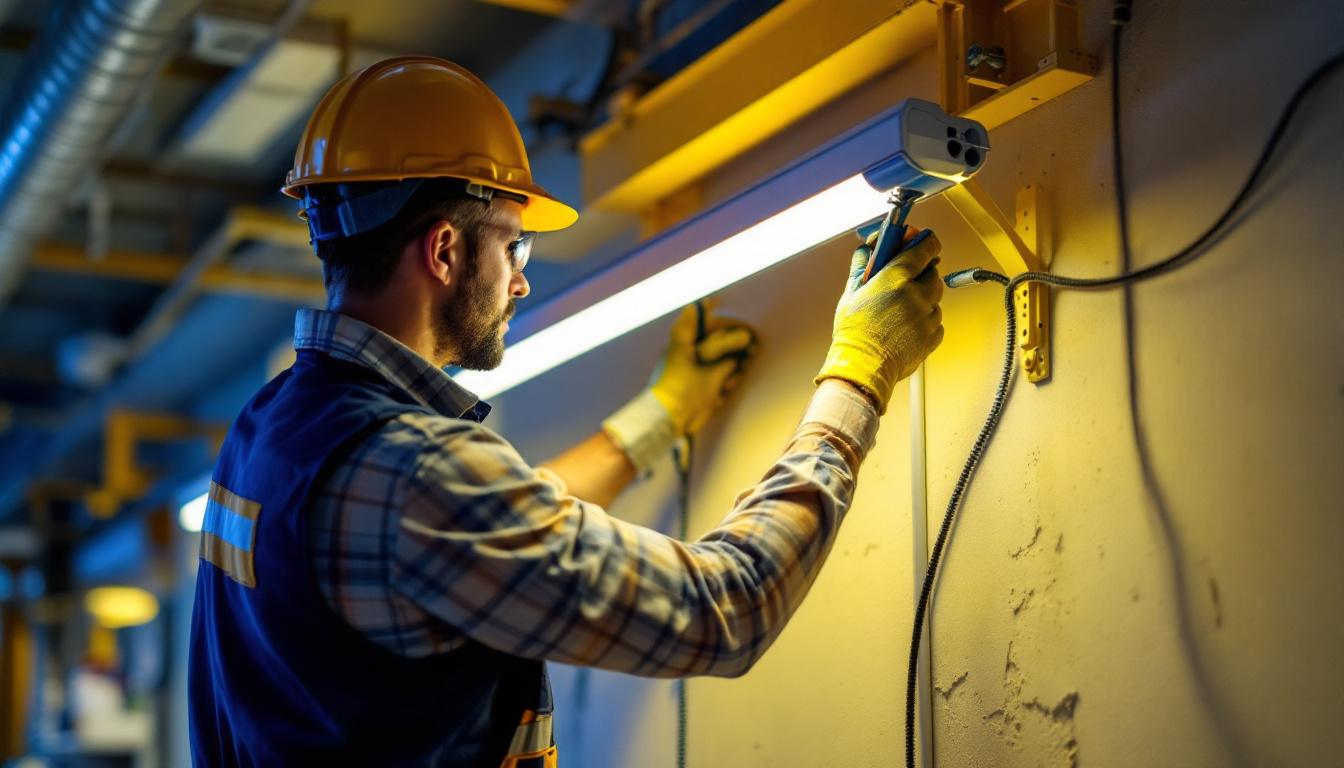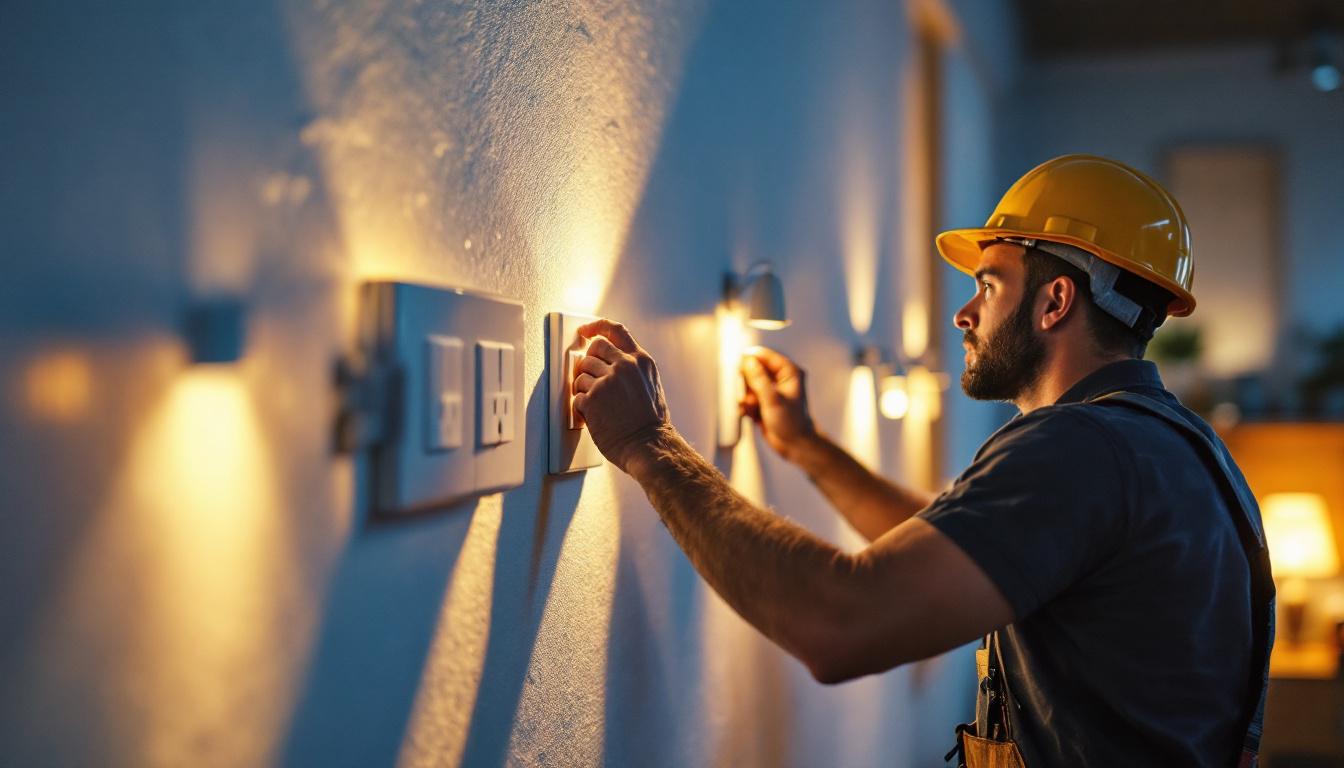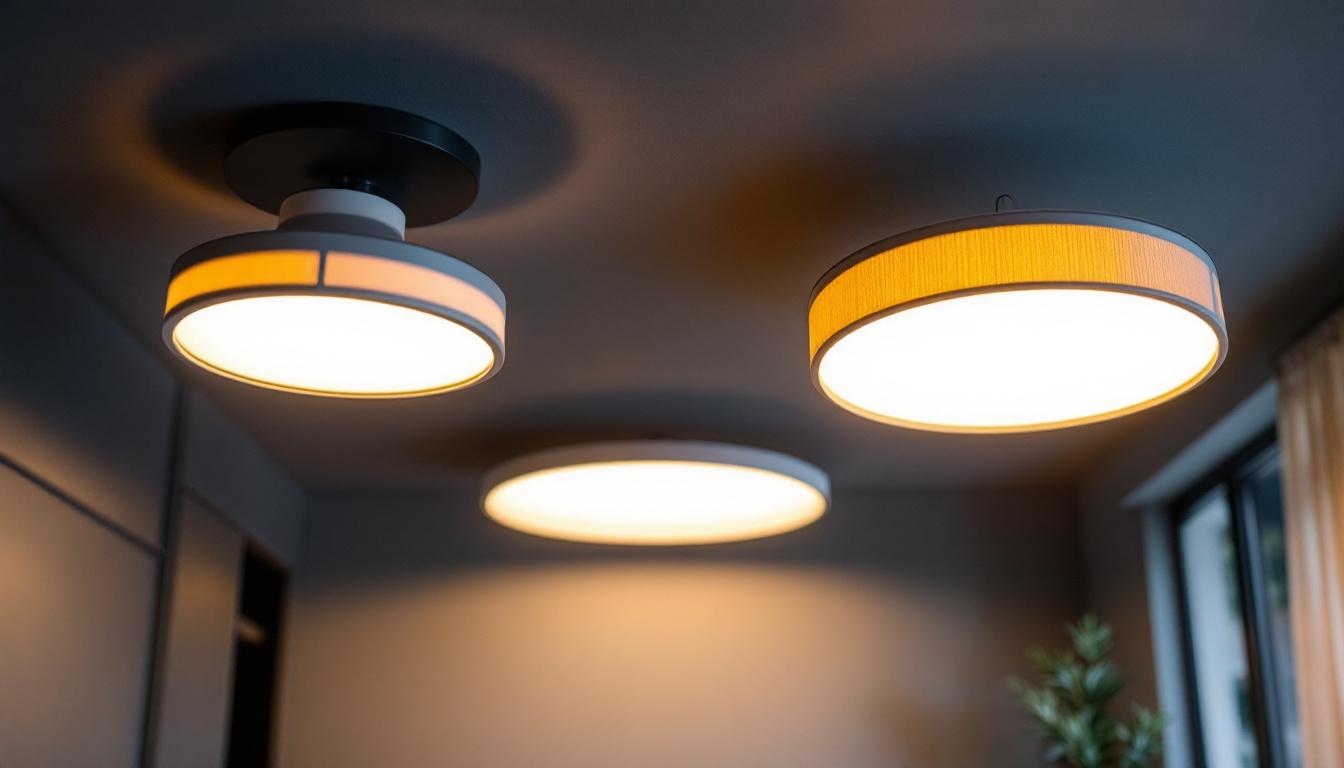
Lighting contractors play a crucial role in the construction and renovation of residential and commercial spaces. With the increasing adoption of energy-efficient solutions, tubelight LEDs have emerged as a popular choice. However, the transition to LED technology comes with its own set of challenges. This article explores the top challenges faced by lighting contractors when working with tubelight LEDs.
To effectively address the challenges of tubelight LEDs, it is essential for lighting contractors to have a comprehensive understanding of the technology. Tubelight LEDs are designed to replace traditional fluorescent tubes and offer numerous advantages, including energy efficiency, longevity, and reduced maintenance costs. However, the technology can be complex and requires specific knowledge to implement effectively.
One of the primary benefits of tubelight LEDs is their energy efficiency. They consume significantly less power compared to traditional fluorescent tubes, which can lead to substantial savings on electricity bills over time. However, the initial cost of purchasing and installing LED fixtures can be higher than that of conventional lighting solutions.
Contractors must communicate the long-term benefits of LED technology to clients, helping them understand that while the upfront investment may be higher, the return on investment through energy savings and reduced maintenance can outweigh these initial costs. This requires a nuanced approach to pricing and client education. Additionally, many regions offer incentives or rebates for switching to energy-efficient lighting, which can further alleviate the financial burden on clients and make the transition to LED technology more appealing.
Another challenge contractors face is ensuring compatibility between new tubelight LEDs and existing fixtures. Many older fixtures were designed specifically for fluorescent tubes, which may not support the new LED technology without modifications. This can lead to additional costs and time delays during installation.
Contractors need to assess the existing infrastructure carefully and determine whether retrofitting is necessary or if a complete replacement of fixtures is more cost-effective. This assessment requires a deep understanding of both the existing systems and the specifications of the new LED products. Furthermore, it is crucial for contractors to stay updated on the latest advancements in LED technology, as new products are frequently introduced that may offer improved compatibility or efficiency. By doing so, they can provide clients with the best possible solutions tailored to their specific needs, ensuring a smooth transition to modern lighting systems.
Installing tubelight LEDs can present unique challenges that differ from traditional lighting installations. The installation process requires precision and attention to detail to ensure optimal performance and longevity of the fixtures. As the demand for energy-efficient lighting continues to rise, understanding these challenges becomes increasingly important for both contractors and end-users alike.
One of the most significant challenges in the installation of tubelight LEDs is the electrical considerations involved. LEDs require a different voltage and current than traditional lighting solutions. Contractors must ensure that the electrical systems in place can accommodate these requirements without compromising safety or performance. This often means upgrading existing wiring or installing new circuits that can handle the specific needs of LED technology.
Additionally, improper installation can lead to issues such as flickering lights, reduced lifespan, or even complete fixture failure. Therefore, it is imperative for contractors to stay updated on electrical codes and standards related to LED installations to avoid potential pitfalls. Furthermore, the use of compatible drivers and transformers is crucial, as these components regulate the power supplied to the LEDs. Selecting the right equipment not only enhances performance but also ensures energy efficiency, ultimately benefiting the environment and reducing utility costs for consumers.
Proper mounting and alignment are crucial for the effective functioning of tubelight LEDs. Unlike traditional tubes, which can be more forgiving in terms of alignment, LEDs require precise positioning to maximize light output and efficiency. This is particularly important in applications where uniform lighting is essential, such as in commercial spaces or art galleries, where the quality of light can significantly impact the overall aesthetic.
Contractors must pay close attention to the mounting process, ensuring that fixtures are securely installed and aligned correctly. This may involve using specialized tools or techniques to achieve the desired results. Additionally, contractors should be prepared to address any unforeseen issues that may arise during the installation process. Factors such as ceiling height, fixture weight, and surrounding structures can complicate the installation, necessitating a flexible approach and problem-solving skills. Moreover, the use of adjustable mounting brackets can help accommodate variations in installation environments, ensuring that each fixture is positioned for optimal performance. By anticipating these challenges, contractors can streamline the installation process and enhance the overall effectiveness of the lighting solution.
Educating clients about tubelight LEDs and managing their expectations is another significant challenge for lighting contractors. Many clients may have preconceived notions about LED technology based on outdated information or misconceptions.
Common misconceptions about LED lighting include concerns about color quality, brightness, and longevity. Some clients may believe that LED lights are too harsh or that they do not provide adequate illumination. Contractors must be equipped with the knowledge and tools to dispel these myths and provide clients with accurate information.
Demonstrating the advantages of tubelight LEDs, such as their ability to produce a range of color temperatures and their long lifespan, can help clients feel more confident in their choices. Providing samples or mock-ups can also assist in visualizing the benefits of LED technology.
In addition to addressing misconceptions, contractors must also set realistic expectations regarding the performance and longevity of tubelight LEDs. While these fixtures are designed to last longer than traditional lighting solutions, factors such as usage patterns, environmental conditions, and installation quality can impact their lifespan.
Contractors should communicate these variables to clients, ensuring they understand that proper installation and maintenance are essential for achieving the best results. By setting realistic expectations, contractors can foster trust and satisfaction among their clients.
Compliance with regulations and standards is a critical aspect of any lighting project. Tubelight LEDs are subject to specific guidelines that contractors must adhere to in order to ensure safety and efficiency.
Different regions may have varying codes and regulations regarding lighting installations. Contractors must be familiar with local building codes, electrical codes, and energy efficiency standards to ensure compliance during their projects.
Failure to adhere to these regulations can result in costly fines, project delays, or even legal repercussions. Therefore, it is essential for contractors to stay informed about the latest changes in regulations and to incorporate them into their planning and execution processes.
Ensuring the quality and performance of tubelight LEDs is also a vital consideration. Many manufacturers provide specifications and testing results for their products, but contractors must verify that these claims are accurate and that the products meet industry standards.
Implementing a quality assurance process can help contractors identify potential issues before installation, ensuring that the products used in their projects are reliable and effective. This not only protects the contractor’s reputation but also enhances client satisfaction.
The lighting industry is highly competitive, and contractors must navigate pricing strategies carefully when working with tubelight LEDs. The growing popularity of LED technology has led to an influx of suppliers and products, making it essential for contractors to differentiate themselves in the market.
Choosing the right suppliers for tubelight LEDs is critical for contractors looking to maintain quality while remaining competitive in pricing. Not all suppliers offer the same level of quality, and selecting inferior products can lead to installation issues and dissatisfied clients.
Contractors should conduct thorough research to identify reputable suppliers that provide high-quality products at competitive prices. Building strong relationships with suppliers can also lead to better pricing and support, ultimately benefiting both the contractor and their clients.
Developing a competitive pricing model is essential for attracting clients while ensuring profitability. Contractors must consider factors such as material costs, labor, and overhead when determining their pricing strategies.
Offering transparent pricing and detailed estimates can help build trust with clients and differentiate a contractor from competitors. Additionally, providing value-added services, such as energy audits or maintenance packages, can enhance the overall appeal of a contractor’s offerings.
Once the installation of tubelight LEDs is complete, ongoing maintenance and support become crucial for ensuring the longevity and performance of the lighting solutions. Contractors must be prepared to provide clients with the necessary resources and assistance.
Establishing maintenance plans for tubelight LEDs can help clients maximize the lifespan of their lighting systems. Regular inspections and maintenance can identify potential issues before they become significant problems, ensuring optimal performance.
Contractors should offer maintenance packages that include routine checks, cleaning, and replacement of faulty components. This proactive approach not only enhances client satisfaction but also creates opportunities for repeat business.
In addition to maintenance, providing technical support is essential for addressing any issues that may arise post-installation. Clients may have questions or concerns about their tubelight LED systems, and having a reliable support mechanism in place can help resolve these issues quickly.
Contractors should consider offering various support channels, such as phone support, email assistance, or even on-site visits, to ensure clients feel supported throughout the lifespan of their lighting systems. This commitment to customer service can significantly enhance a contractor’s reputation and lead to positive referrals.
While tubelight LEDs offer numerous advantages, lighting contractors face a range of challenges when working with this technology. From understanding the complexities of LED systems to navigating installation hurdles and client education, contractors must be equipped with the knowledge and skills to succeed in this evolving market.
By addressing these challenges head-on and implementing effective strategies, lighting contractors can not only enhance their service offerings but also position themselves as leaders in the industry. The transition to tubelight LEDs represents an opportunity for growth and innovation, and those who embrace these changes will undoubtedly thrive in the competitive landscape of lighting solutions.
Overcome the challenges of tubelight LED installations and lead the way in energy-efficient lighting with LumenWholesale. Our commitment to providing contractors with spec-grade lighting products at unbeatable wholesale prices ensures that you can deliver exceptional value to your clients without compromising on quality. With our extensive selection that meets the highest industry standards, free shipping on bulk orders, and no hidden fees, you’re set to tackle any project with confidence. Elevate your lighting solutions today and experience the best value in wholesale lighting at LumenWholesale.

Discover how embracing the innovative Hung Angles technique can revolutionize your lighting projects by saving time and reducing costs.

Discover how different wall outlets can boost your lighting contractor business.

Discover the benefits of LED conversion bulbs and how they can transform your home into an energy-efficient haven.

Discover how incorporating flush mount modern lighting into your projects can elevate your business.